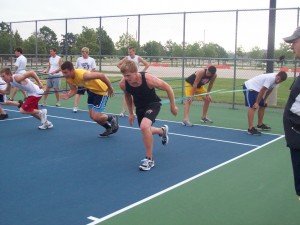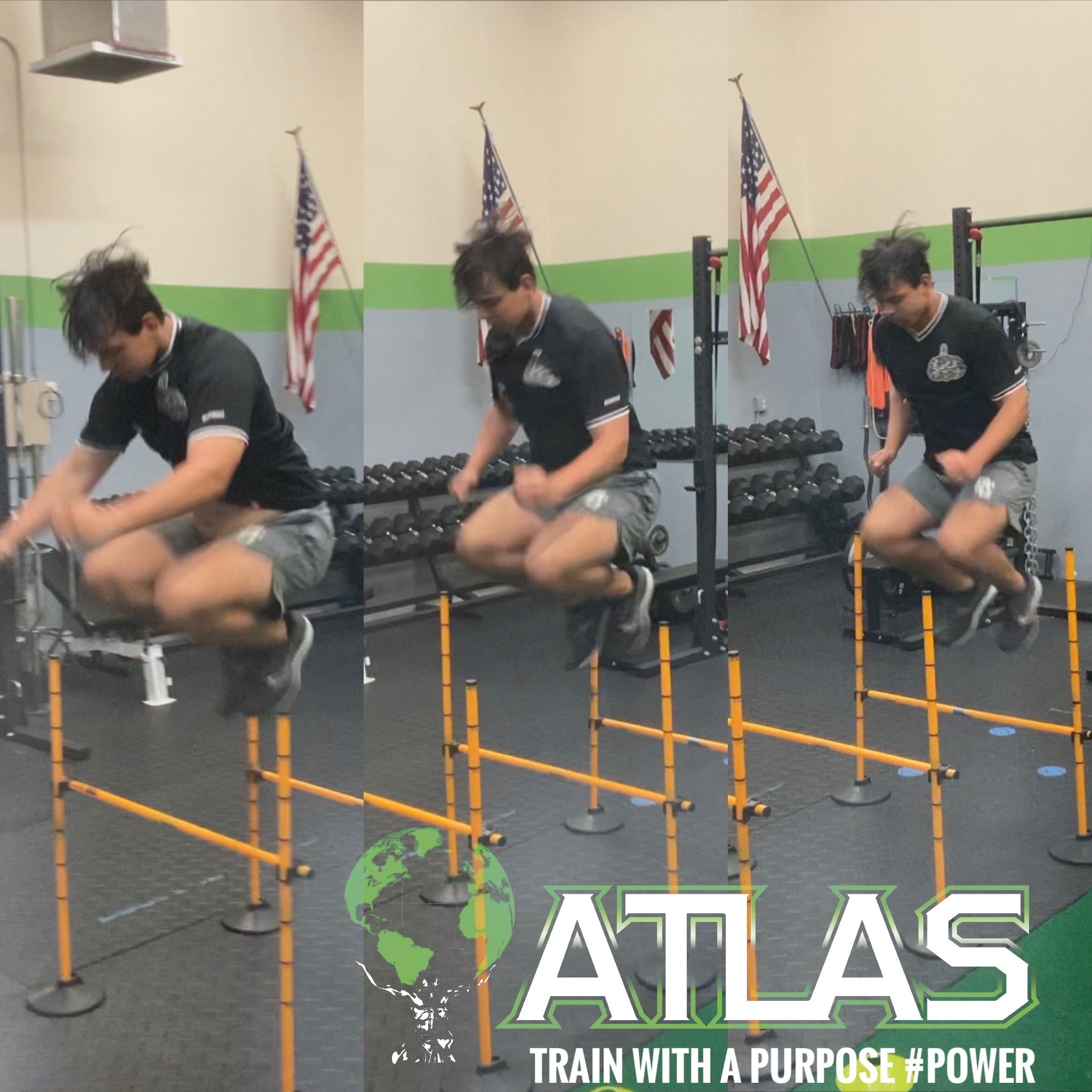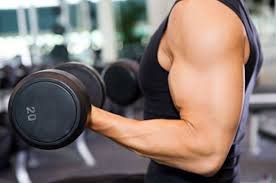
Powering Through: Energy System Development for Peak Stamina in Field Sports and Court Play
In the arena of sports, endurance is the unsung hero that fuels athletes through grueling matches and competitions. Whether it's the endless sprints of soccer, the relentless running of basketball, or the ceaseless pursuits of field sports, stamina is the key to success. At Atlas Performance Training, we understand the significance of cardiovascular endurance in these sports. In this blog post, we'll stress its importance, provide specific training methods and coaching principles for improving energy system development, and discuss how sport-specific endurance training can elevate an athlete's stamina and energy systems.

The Power of Lifting Weights: A Personal Journey
Ever wondered why people get into lifting weights? It's a question that often reflects personal stories of transformation and empowerment. Let's explore the profound reasons behind my Journey lifting weights. Understanding the motivations behind weightlifting can be a mystery to those who haven't experienced its benefits firsthand.

Should Tall People Do Deadlifts? Is it Bad for Their Backs?
Deadlifts are often hailed as one of the most effective full-body strength exercises, but there's a common question that tall individuals frequently ask: Should tall people do deadlifts, and is it potentially harmful to their backs? We'll address this concern and provide a solution, explaining how Atlas Performance Training can ensure safe and effective deadlifting for individuals of all heights.

Plyometric Training for Explosive Power
Plyometric training is a dynamic and effective method for enhancing explosive power, a critical component of athletic performance. For teen athletes, plyometrics can be a game-changer when executed correctly and safely. In this blog post, we will delve into the numerous benefits of plyometric exercises, offer a range of suitable exercises for young athletes, emphasize the importance of proper warm-up and technique, and explore how plyometrics can complement weightlifting to increase power.

The New and Old Smarter Cardio Training of the 21st Century....
The goal of any training program should be to develop these energy systems and “train” them to produce the energy in an efficient manner during practice and competition so that energy is readily available to the muscles during physical activity. All three energy systems are interdependent of each other, but in most situations, one energy system or a combination of two of the three is required to make things happen. This goes into the concept of performance-specific training and how to create training programs that are designed specifically to produce improvements in muscular endurance, cardiovascular fitness, and improvements in speed and power of the individual….

Build a Stronger Kid: Lift and Learn
There is an age old question that goes back as far as I can remember, I tried to find out where or who came up with this myth and google failed to give me the definitive answer. But that is not important, what is important is that we are going to look at the benefits of learning to lift by briefly looking at the process of LEARNING to lift weights, which is based on two important principles. The first principle is developing the young person’s Relative muscular strength, which learning to perform basic bodyweight movements like a push-up, bodyweight squat, and lunge Pull-Ups, etc. with proper form and body control. In developing youth strength training programs for beginners exercises should in my opinion be limited to the use of specific types of resistance equipment like dumbbells, rubber bands, and tubes, with minimal intensity (lightweight) after they have learned how to properly execute the basic exercises that improve their Relative muscular strength. Developing relative strength varies and depends on the commitment of the individual youth, and their parents. After a solid foundation of relative strength has been developed, start developing their Absolute muscular Strength. This is when Free weights and resistance machines are added to the training program, examples of Free weight movements are……

Body Composition: Body FAT Mass v.s. Lean Muscle Mass
I can speak from experience as a trainer and former college and professional athlete that recording and tracking your body composition during training can improve your results and give you the blueprint to reaching your goals even if you fall off the wagon and regain that extra 20 - 25 lb over the holidays or on a vacation. There are 4 ways body composition can help improve your training experience along with your health in general, but only if you are looking for a long-term solution and not a quick fix plan that will leave you 30-40 lb heavier and wondering what happened. These are the 4 reasons you should be using body composition to improve your training experience………

Energy System Development Series
Lifting heavy weights to become stronger is one of the most popular reasons to lift weights. But the combination of using various weightlifting principles and program variations to improve muscular Hypertrophy (increase in muscular tone and size) is even more effective and fun. Lifting to increase muscular size helps individuals improve not only their physical appearance but also their physical performance. One of the factors that are important is the use of set and rep manipulation. This means programming different sequences sets and reps to increase the stress applied to the muscles that are being trained and. In theory, the number of sets should be about 2-4 sets and the reps should be 8-12 reps using 65%-85% of the maximum weight you can lift for 1 rep for that exercise to achieve hypertrophy. One other important factor is limiting your rest in between sets to less than 1 minute. This limit in the recovery time will increase the stress on your muscles which increases the growth response your muscles have during the recovery process. THE MAGIC HAPPENS IN THE RECOVERY!

YOU CAN'T BE SOFT YOUR WHOLE LIFE
Every time I got the chance to go in there on my weekend visits I would try "lift" weights (was lucky I didn't lose a toe). Then my dad moved to Chicago and my lifting weight days were over as far I knew it.
Fast forward to 1988 my sophomore year of High School after football season I meet a 5'10 280 lb Italian guy named Raul Denotti, he was a bodybuilder and part-time volunteer football coach. It was in the weight room talking and "working out" which was basically doing curls and triceps cable extensions in between sets of talking…..

Energy System Development Series
Just a brief overview of what Energy Systems Development training is by definition is training specific energy system to produce the desired training effect that is specific to the goals of the training program. There are there main energy systems that the body taps into to acquire the energy to perform tasks depending on the duration and the intensity of the task. Here is a brief description of the three energy systems……

Energy System Development Series
Whether you are a high school athlete looking to gain an edge on the competition in your offseason/preseason training program or a weekend warrior training in your spare time for an obstacle race, marathon, or an adult athletic league, or trying to lose those last 10 - 15 lbs of holiday weight, the old way of improving your physical performance and condition has changed. Enter the phrase Energy System development (ESD) training. ESD training should be the foundation of any training plan to improve your performance; it could be the difference between competing at a high level or coming up short in a game. In order for muscles to contract and produce movement ATP (adenosine triphosphate) must be present. The body’s energy system is responsible for converting ATP to a usable form of energy called ADP (adenosine diphosphate). ADP can be produced using three energy systems:

